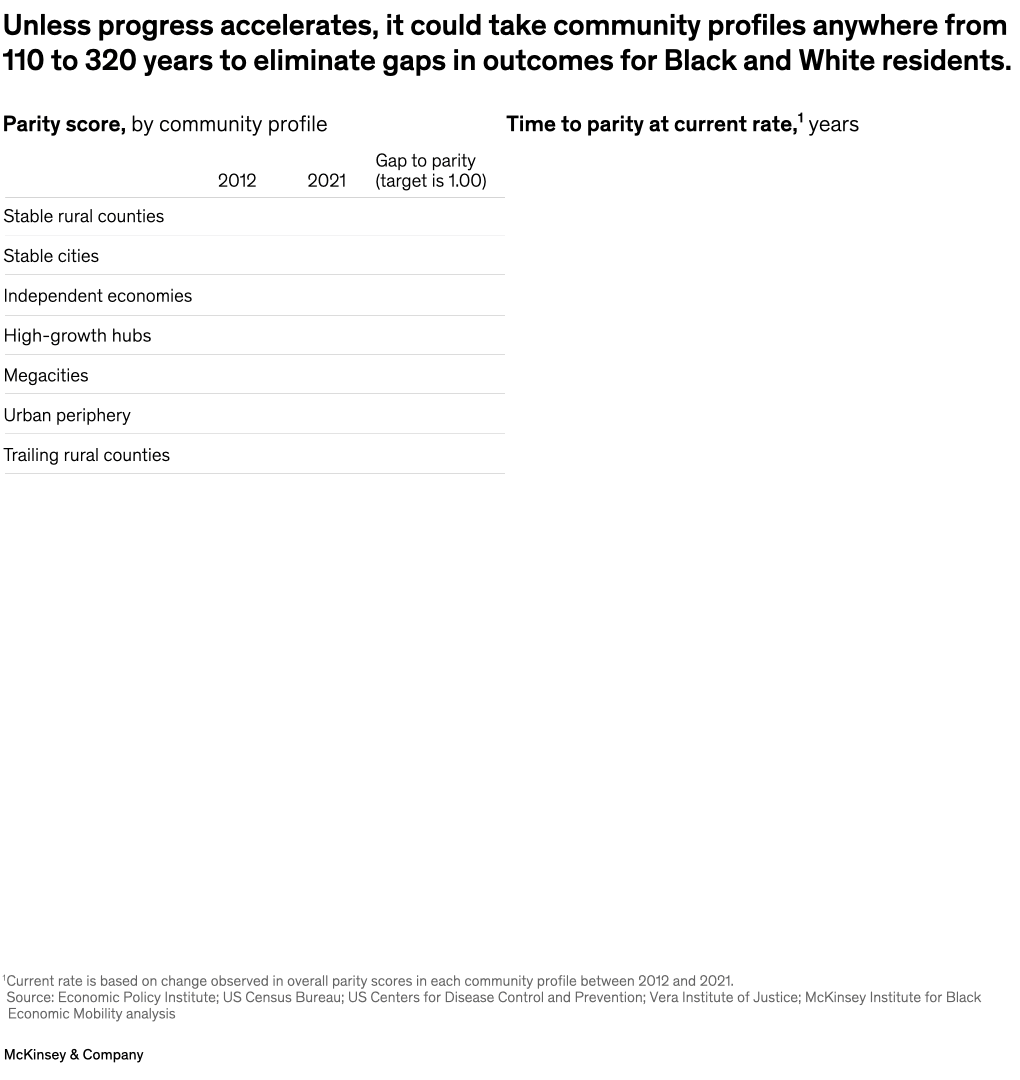How long would it take for Black Americans to reach a level of economic prosperity and quality of life that’s on par with that of their White neighbors? Senior partner Shelley Stewart and coauthors find that it could take more than three centuries for Black residents of all types of communities, from rural counties to megacities, to reach such parity. Affordable housing and early childhood education are two areas of action that could help level the playing field.

Image description:
A bar chart shows the time to reach racial parity for different community archetypes in the US if they continue at their rate of parity score change between 2012 and 2021. It could take stable rural counties ~320 years to reach parity, stable cities ~240 years, independent economies ~220 years, high-growth hubs ~210 years, megacities ~160 years, the urban periphery ~120 years, and trailing rural counties ~110 years.
Source: Economic Policy Institute; US Census Bureau; US Centers for Disease Control and Prevention; Vera Institute of Justice; McKinsey Institute for Black Economic Mobility analysis.
End of image description.
To read the report, see “The state of Black residents: The relevance of place to racial equity and outcomes,” February 1, 2024.